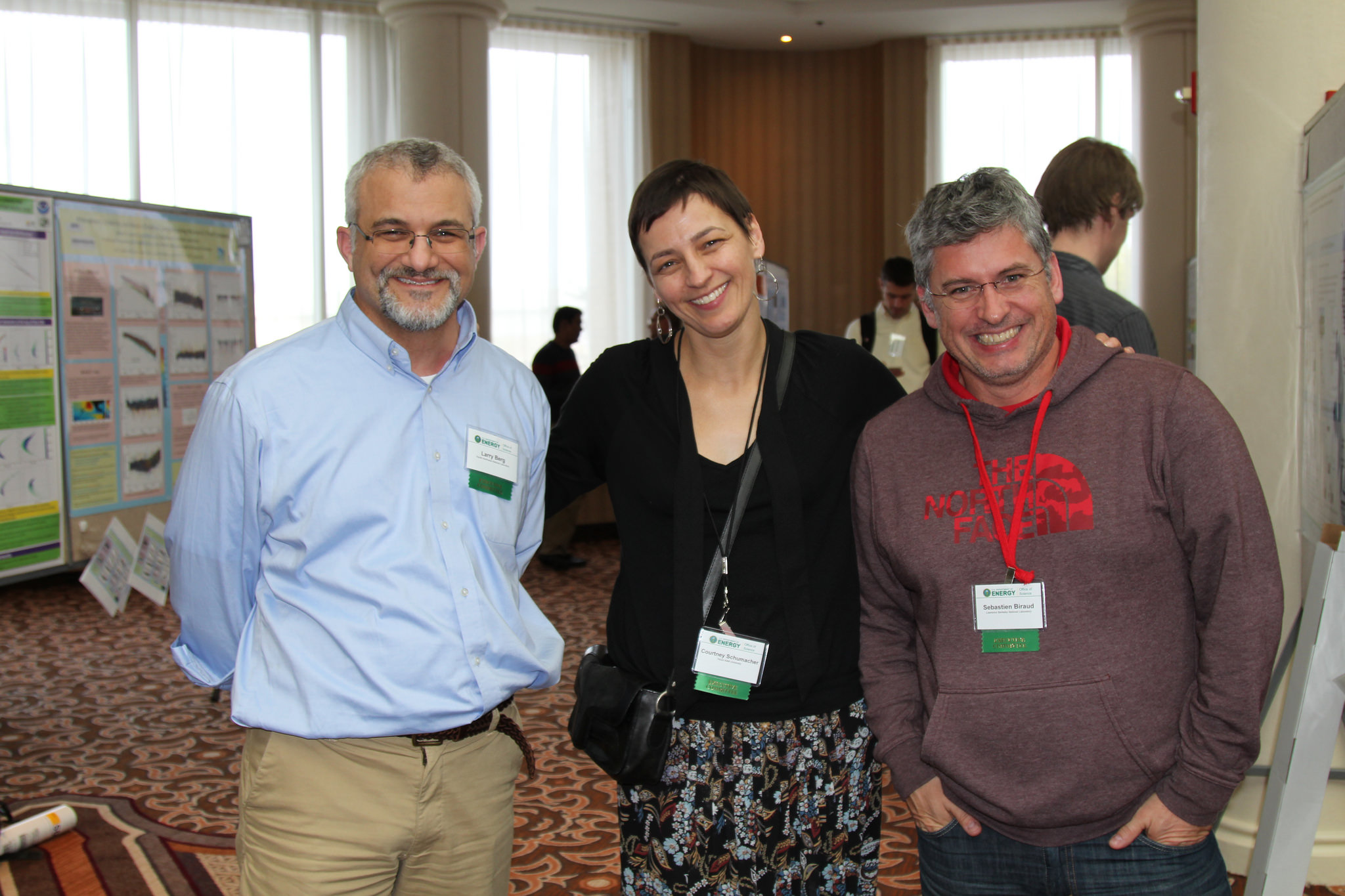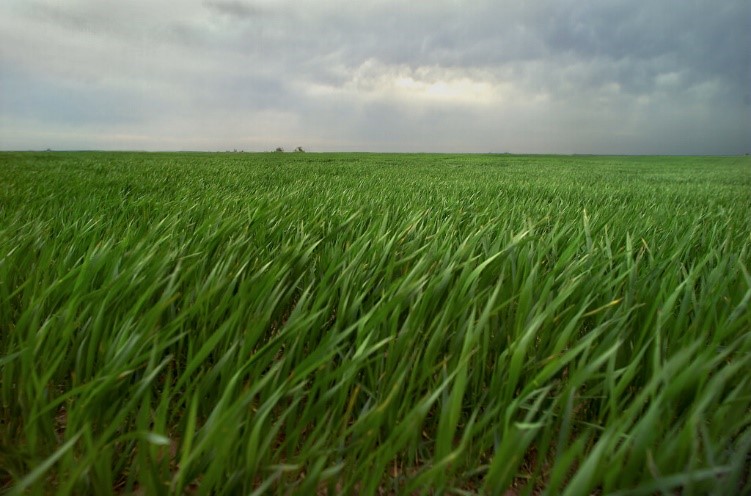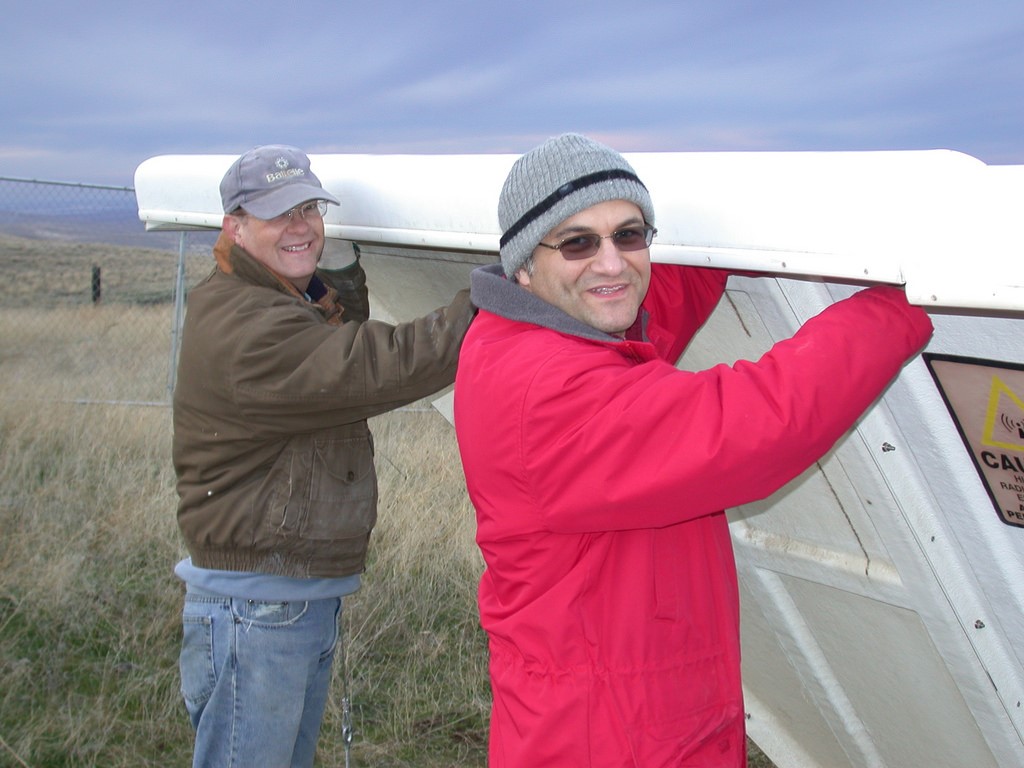UEC Profile: For Larry Berg, Investigations Happen at the Dynamic Boundary of Earth and Sky
Published: 19 January 2018
This is the first article in a series of profiles on members of the ARM User Executive Committee (UEC).

Coming in mid-March to an atmospheric scientist near you is the 2018 Joint ARM User Facility and ASR Principal Investigator (PI) Meeting in Tysons, Virginia. The U.S. Department of Energy’s Atmospheric Radiation Measurement (ARM) Climate Research Facility and Atmospheric System Research (ASR) program co-sponsor this annual gathering.
Larry Berg will be at the meeting this year, in part because he is chair of the 12-member ARM User Executive Committee (UEC), the official voice of the many scientists who use ARM data in their work.
“The main goal is to represent user interests in the ARM community,” says Berg, a specialist in land-atmosphere interactions at Pacific Northwest National Laboratory (PNNL) .
Among his prolific annual peer-reviewed output on turbulence, terrain, and other boundary-layer issues, Berg co-authored a study on surface properties and interactions for an American Meteorological Society monograph series on ARM history.
At the March joint meeting and elsewhere, says Berg, the UEC will gather input from the user community, continue educating scientists on accessing and using ARM data, and accelerate outreach to new scientists, including first-time principal investigators and postdocs.
The committee will also employ their time at the meeting to train new users and discuss ARM data tutorials.
A Storm-Wrecked Barn Marks a Science Path
You could say that the story of Berg getting to this year’s joint meeting in Virginia began in Kansas.
As a boy growing up in State College, Pennsylvania, he spent many summers in rural Kansas, where most of his extended family lived—and where epic thunderstorms and ripping winds could roll in any moment. During one such weather event, the barn at an aunt and uncle’s house lost its top floor, and a repair was never made.
“It was always a stark reminder of the power of storms,” says Berg.
The storm-shortened half-barn also set the first nettle of the serial inspirations that put Berg on a path to study the consequential dynamics of Earth, wind, rain, and sky.
One other inspiration was a memorable earth sciences class in high school, which featured a unit on weather. Another was a contrary inspiration of sorts: Berg’s father was a plant geneticist who worked for the U.S. Department of Agriculture. It was a science pursuit interesting to the younger Berg for its content (he went on plant-hunting expeditions with his father), but not for its pace.
“I didn’t want to watch the grass grow,” says Berg.
Early on in school, science, math, and engineering held allure for him, and that image of the sheared barn also stuck fast. So in 1989 it was a natural step for Berg to stay in his hometown and enroll in Pennsylvania State University’s first-class undergraduate meteorology program.
While there, he hewed to the hard-science weather studies, though his electives were a bit of a swerve for a meteorology major: courses in aerospace and mechanical engineering. Still, they turned out to be presciently useful to his emerging interest in urban air pollution, weather, and climate.
A Fateful Written Answer

State College, Pennsylvania, is a place full of adults with higher degrees and children who expect to go on for the same.
Berg took a post-bachelor’s internship to work on dispersion modeling at PNNL but says he soon realized “it was no place to be without a PhD.”
To start his doctoral studies, he landed at the University of Wisconsin-Madison, where the application included a page of questions about his interests. He included his main one at the time, the airborne dispersal of urban pollutants, and then wrote as an afterthought: “I am also interested in clouds.”
Berg reflected later: “It was that one sentence that took me down this path.”
Those six last-minute words put him in concert with graduate school mentor Roland Stull, who had some important ARM-supported research underway about the boundary layer and turbulence in the lower atmosphere.
“I didn’t realize I was getting in on the start of the project,” says Berg.
The field research, as reflected in this early paper, earned him his chops as an early ARM data user. In the early and mid-1990s, Stull was one of the first experimentalists to use ARM’s first fixed atmospheric observatory, the Southern Great Plains. Berg spent—and has continued to spend—a lot of research time there.
A year after Berg started at Wisconsin, Stull pulled up stakes to move to the University of British Columbia. Berg and three other graduate students followed, packing up a Ryder truck and trekking west.
Berg finished his PhD in 2002, penning a dissertation on a new parameterization scheme for boundary layer clouds in numerical models. That work has since been implemented in the Weather Research and Forecasting model.
Representing Clouds in a Model, and Stopping for a Bagel

At PNNL, where he has been for more than 15 years now, Berg started in again on air-dispersion modeling. Early on he found himself at his first postdoctoral field sites, an array of air-tracer instruments first set up in Oklahoma City, Oklahoma, and then at the Stevens Institute of Technology in Hoboken, New Jersey.
Berg lived in midtown Manhattan and commuted to the New Jersey site, stopping every day for a bagel with cream cheese. It was not among the tough outdoor field sites where many new atmospheric scientists find themselves working.
Research since then has led Berg into the intricacies of how to represent clouds in models, how they influence the surface energy budget, the processes involved as aerosols are lifted into the clouds, liquid-phase chemistry, and—broadly—the complexities of land-atmosphere interactions.
Along the way, Berg has played a big part in many ARM field campaigns, including the Cumulus Humilis Aerosol Process Study (CHAPS) and the Two-Column Aerosol Project (TCAP). He is also a co-investigator with PNNL’s Jerome Fast in the Integrated Cloud, Land-Surface, and Aerosol System Study (ICLASS), a scientific focus area project funded by ASR. It was renewed recently, getting very high marks from reviewers.
From the day he saw that sheared barn to the present day, says Berg, “I find it fascinating to study and understand the weather that’s going on around us.”
The ARM Climate Research Facility is a DOE Office of Science user facility. The ARM Facility is operated by nine DOE national laboratories, including Pacific Northwest National Laboratory.
Keep up with the Atmospheric Observer
Updates on ARM news, events, and opportunities delivered to your inbox
ARM User Profile
ARM welcomes users from all institutions and nations. A free ARM user account is needed to access ARM data.


















